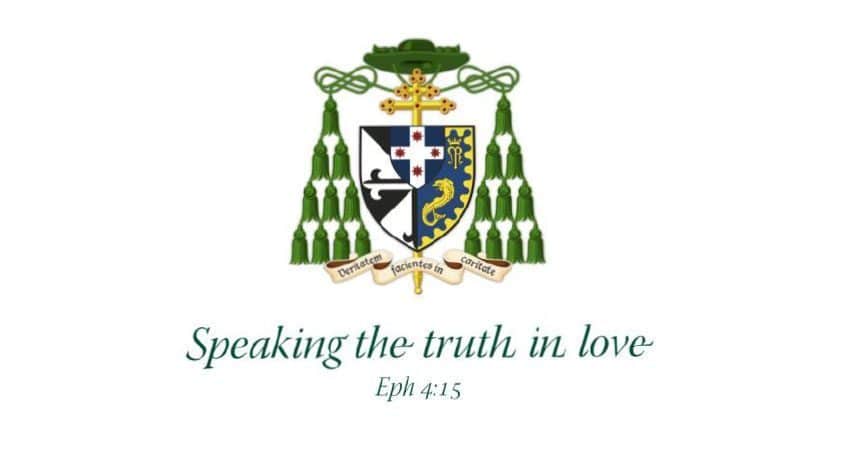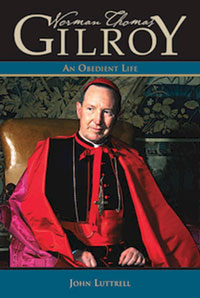BOOK LAUNCH FOR NORMAN THOMAS GILROY: AN OBEDIENT LIFE BY JOHN LUTTRELL FMS

BOOK LAUNCH FOR NORMAN THOMAS GILROY: AN OBEDIENT LIFE
BY JOHN LUTTRELL FMS
St. Benedict's Hall, University of Notre Dame Australia, Broadway
Like Brother John Luttrell, I never met Cardinal Gilroy. As a child growing up in Lakemba and Lane Cove I knew of him simply as “the Cardinal”. We had as a school textbook the second edition of Br George Columba Davy's, The Christian Gentleman: A Book of Courtesy and Social Guidance for Boys, with a preface by the Cardinal. Its advice on various matters – such as leaving any beach where women sported bikinis – already seemed dated, but the section on etiquette when meeting or writing to Governors, Premiers, Archbishops and Nuncios was a curiosity to me, even if I thought I'd never have occasion to use such information!

According to The Christian Gentleman Gilroy was to be addressed as “His Eminence Norman Cardinal Gilroy” (he had no civil titles yet) and thereafter as “Your Eminence”; a letter should finish with “I have the honour to remain Your Eminence's obedient servant”! The Fifth Metropolitan Archbishop of Sydney, Cardinal Priest of Santi Quattro Coronati, Knight Commander of the Most Excellent Order of the British Empire, etc. – or “Norman Thomas” for short – was in fact a central figure in the history of Catholicism in these parts. His legacy includes: a great many parishes and churches erected in his time; many of our schools and the 'system' and Sydney Catholic Schools office that serves them; the social covenant that underpins them so that the Church educates a quarter of all Australians, the Commonwealth and states contribute significant (if ever-contested) “state aid”, and the parents and parishes also make significant contributions; and institutions such as the Matthew Talbot Hostel in Woolloomooloo, the Council of Priests, The Catholic Weekly and the Clergy Fund.
Gilroy was Archbishop of this fair City for a whopping 31 years, during the tumults of world war and post-war mass migration, a period of rapid growth in population, affluence and infrastructure, the tempestuous social and sexual revolution of the 60's, and the equally turbulent period of Church reform after the Vatican Council. It is surprising that a person of such significance should so far have had only one short book-length biography written immediately upon his retirement. John Luttrell's book Norman Thomas Gilroy: An Obedient Life (St Paul's, 2017) fills a long-standing gap, offering us 437 pages of insight into this towering figure, his context, what he did and who he was.
The first nine chapters outline the life of a poor boy from Glebe who rose to be the first Australian-born Cardinal. We learn of his first sacraments and schooling here at St Benedict's Broadway; after some other schools he entered the workforce aged 13. He joined the Postmaster General's Department as a messenger boy and worked his way up to telegraphist in Bourke then Narrabri. He served with the Naval Wireless Service, at first on the transport ship, the Hessen, with First Light Horsemen bound for Alexandria and then Gallipoli. This led him fortuitously to Anzac Cove on 24-25 April 1915 which many count as the founding moment for Australian identity. He witnessed the troops and horses disembarking, many to their slaughter. But as a ship's wireless operator he was relatively safe. After further adventures abroad, the Post Office recalled him and stationed him in Lismore. One day in Confession he heard: “'Is that you Mr Gilroy?' asked [Mgr] McGuire [the Dean of Lismore Cathedral]; and then, 'Did you ever think of becoming a priest?'” Gilroy had, in fact, thought about it, but dismissed the thought because his family were too poor to meet the customary contributions. The confessor agreed to fund his education and, fortuitously, the priest who had married his parents, John Carroll, was now the Bishop. Something about Gilroy made him think it worth the gamble of admitting to the seminary someone schooled only to primary school level, of relatively great age (at 21), and having been rather too exposed to 'the world' for the bishop's liking (p.22).
The word 'fortuitous' (or, better, 'providential') regularly comes to mind as we read of Gilroy's extraordinary progress from seminarian at St Columba's Springwood, through Propaganda College in Rome, to priestly ordination in 1923 (ch.4); then as Secretary to the Apostolic Delegate in North Sydney, as Secretary to the Bishop of Lismore, as Chancellor of the diocese, and as Lismore correspondent for what became The Catholic Weekly (ch.5). He was only saved from joining the Jesuits by being appointed Bishop of the vast Diocese of Port Augusta in South Australia in 1934 (ch.6), less than three years later as Coadjutor Archbishop of Sydney (ch.7), three years after that as Archbishop (ch.8), and finally Cardinal six years further on (ch.9). This put him very much in the youth group of the College of Cardinals!
All of which, you might say, you'd expect to read in any biography worth its salt. But in the following chapters we get to meet the man beneath the biretta. As Rupert Short, Religion Editor for the Times Literary Supplement, has said, Christianity “cannot be divorced from the personal commitment that gives it its meaning” and “the practical witness of believers may be their most eloquent statement of faith”.1 The real interest of this book, I think, is in its detailed examination of Gilroy's 'eloquent statement of faith', the personal commitment which gave meaning to all he did. So it is that Luttrell's biography devotes chapters to 'the Gilroy style' with respect to his clergy (ch.10), religious (ch.12), and especially his “lay legions” (ch.11) – with brigades including “the Dentists Guild of St Apollonia, the Bankers Guild of St Matthew, the Police Guild of St Christopher, the Nurses Guild of St Anne, the Taxi Drivers Guild of Sts Christopher and Anthony, and the Hoteliers Guild of St Bernard” (p.153).

Luttrell also probes for us Gilroy's passions for the causes for canonisation of Mary MacKillop and Eileen O'Connor and for the establishment of a Catholic university in Australia, none of which was fulfilled in his lifetime (chs 12 & 15): but in due course MacKillop has been canonised, O'Connor's cause is being investigated, there is a Catholic university here in his old school house, and another in his old office at the Apostolic Delegation. More successful in his own life-time were his grappling with the politics around 'the Movement' (ch.16) and his defence of Catholic schools (ch.17). As one of those charged with preparing the Vatican Council, Gilroy proposed the use of European vernacular languages such as English in correspondence with Rome and in the Council sessions, if not yet the Liturgy; but Pope John insisted on Latin only. “The result,” Luttrell wryly notes, “was that the bishops struggled to understand one another, particularly when the Latin had an Australian accent.” (p.307) We read with interest how the Australian bishops caucused and contributed to the Council, with Gilroy presiding over three of the sessions. We see him faithfully applying the Council documents on his return (ch.18) and attempting to steer the Church through 'the turbulent sixties' including the controversies over Vietnam, Humanæ vitæ and the departure of many clergy (ch.19).
Along the way we meet a strong administrator and a good negotiator, conservative and cautious by inclination, pastoral and pragmatic in his approach, and loyal to those around him and to his boss the Pope. Behind the “poker face” was a man of deep and unwavering piety, kind-hearted and conscientious. Thus we read that at a family gathering Gilroy he confessed he had been lonely at the top and had relied upon his family for the affection and sheer normality he needed (p.388). Without the fantastical psychologising of some modern biographies, Luttrell offers some glimpses at the soul that informed the public persona.
Br John Luttrell already has several histories of other parts of the Church in Australia, and so his sympathetic and nuanced portrayal of this important figure in Australian Catholicism is not unexpected. Others during Gilroy's life-time were similarly appreciative. In 1969 Gilroy's long service was recognised by the empire, when he awarded a knighthood, “the first time since the Protestant Reformation that an English sovereign had given such an honour to the Catholic Church” (p.375). In the following year he was again recognised by the Church, Paul VI crowning his career with the first ever papal visit to Australia – the one time I can say for sure that, aged 10, I attended Mass with Cardinal Gilroy at Randwick Racecourse. In 1971 his service was recognised by the nation, when he was the first cleric named “Australian of the Year”. Seven thousand attended his funeral in 1977, including Prime Minister Malcolm Fraser and Opposition Leader Gough Whitlam, and they called him “a truly great Australian”. Now at last we have a comprehensive and balanced biography. It is with great pleasure, therefore, that I now declare Norman Thomas Gilroy: An Obedient Life, launched!

